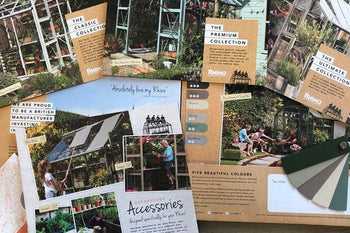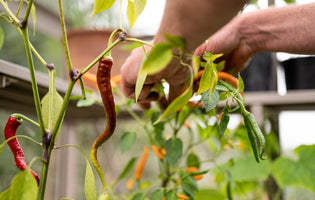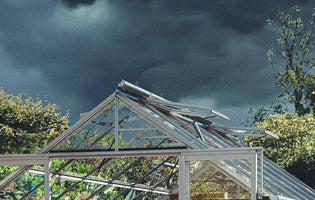For the seasoned (and organized) gardeners among us, there’s little more satisfying than spending time prepping your garden ahead of the warmer growing season.
Bulb planting usually occurs between September and December, as bulbs need several weeks of cold temperatures to help them to emerge from dormancy and flower to their full potential.
This usually means that they’re in the ground for several months before they start to flower, which can leave them vulnerable to the elements, (as well as a few naughty garden critters!).

Risks to Your Bulbs
Unfortunately, there are always going to be a few things that can cause a risk to your bulbs once they’ve been planted.
Our feline friends are serial offenders for digging up bulbs; especially if they happen to be planted exactly where they like to do their al fresco business. And our kitty companions aren’t the only neighborhood delinquents. Local wildlife, such as birds, foxes and even badgers have also been known to dig up and feast on bulbs as a nutritious snack.
The glorious Great British weather can also be a big risk to your bulbs. Getting your bulbs in the ground before the worst of the frost is usually enough to protect them, but a particularly wet or cold winter, can be enough to ruin all your hard work!
Where you position your bulbs can also be fundamental to the success of your growing endeavors. Bulbs need plenty of sunlight and drainage to flourish. Too little drainage and you run the risk of rot setting in. Monty Don, the green-fingered expert himself, is quoted in Homes and Gardens as saying ‘With most bulbs, you can never have too much drainage – they will grow the better for it,’.
Keeping your beds well weeded, even before your bulbs have sprouted is the best way to give them every chance of success. Some of the hardier strains of weed, such as bindweed, try to strangle off budding plants, killing your bulbs before they’ve even had a chance! Weeds can also leech much of the nutrients from the soil, leaving little for your plants, and causing them to be weak and malnourished.
The garden really can be a brutal place to start life…
And if all that’s not enough, then there’s also a plethora of creepy crawlies that will find your bulbs to be a tasty treat sometimes before you’ve even got them into the ground. If not properly stored, Aphids will nibble away on your bulbs causing the injured plants to fail to fully flower. If the plant does manage to survive, the flower could be disfigured.

How to protect your bulbs
So just how can you protect your hard work from all the perils of the garden?
One effective method for protecting your bulbs from larger garden visitors, such as squirrels and birds, is to place a protective metal mesh over the flower beds once the bulbs have been planted. This makes it much harder for animals to dig at the ground and retrieve your bulbs.
Some gardeners advocate leaving an alternative food source for your animal callers, such as bird feeders and nuts for squirrels. Whilst this may distract them from your bulbs, if they come back looking for more food at a later date, and there isn't a steady supply, they might go for your bulbs anyway!
A most simple and effective way to best protect your bulbs whilst they are in their early stages is to plant them inside and only put them in the ground once they’re a little more established. A greenhouse is a great place do to this! A greenhouse will give you a place to pot your bulbs and keep them safe until they start to sprout, all whilst giving them plenty of sunlight to thrive.
Visit The Ultimate Guide to Greenhouses to explore everything there is to know about purchasing and growing in a greenhouse.
But what if you don’t have a huge amount of outdoor space? Have no fear, there are plenty of small greenhouses for sale which will provide your plants plenty of protection without needing a huge plot of land.

How to Tell if your Bulbs are Viable
Of course, there’s no point in going to all the trouble of planting and protecting your bulbs all winter if the bulbs aren’t healthy to begin with. There are a number of ways to tell whether your bulbs will be viable once planted. A healthy bulb will be sturdy and plump, not wrinkled and dehydrated. If it crackles when you squeeze it, it’s unfortunately well past its best. In addition, if they feel soft or mushy, they need to be thrown away, as rot has already set in.
You should also make sure they don’t come into contact with other bulbs as the rot can spread from infected bulbs to healthy ones.
For more ideas on how you can protect your bulbs, or create a growing space for your plants, visit Rhino Greenhouses Direct, where you’ll find a whole host of options for every budget and available space.
Happy planting!
Matt Hartley








